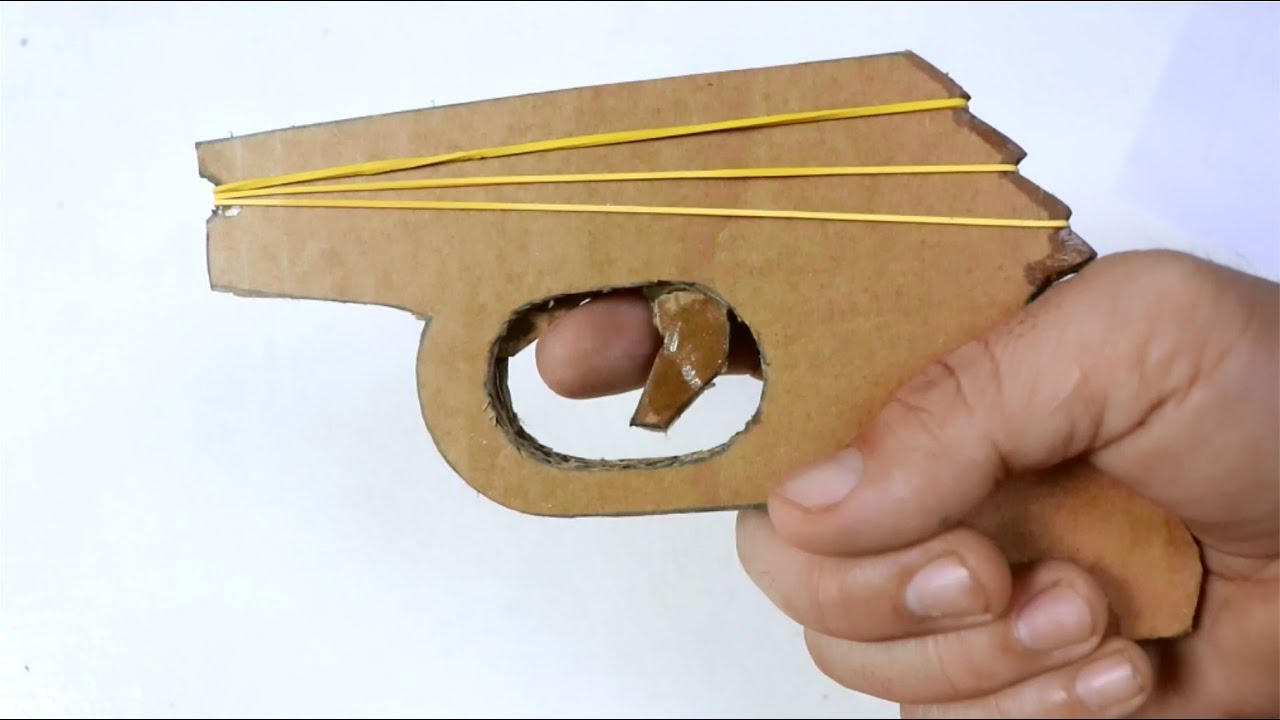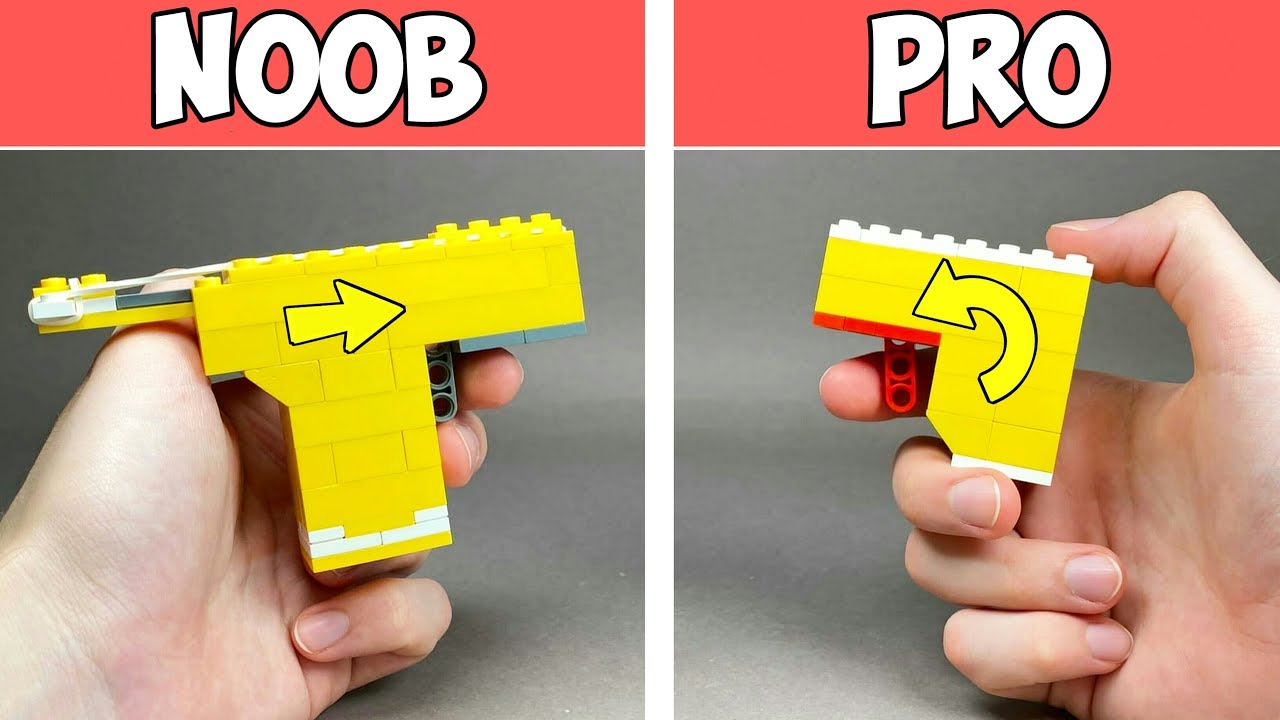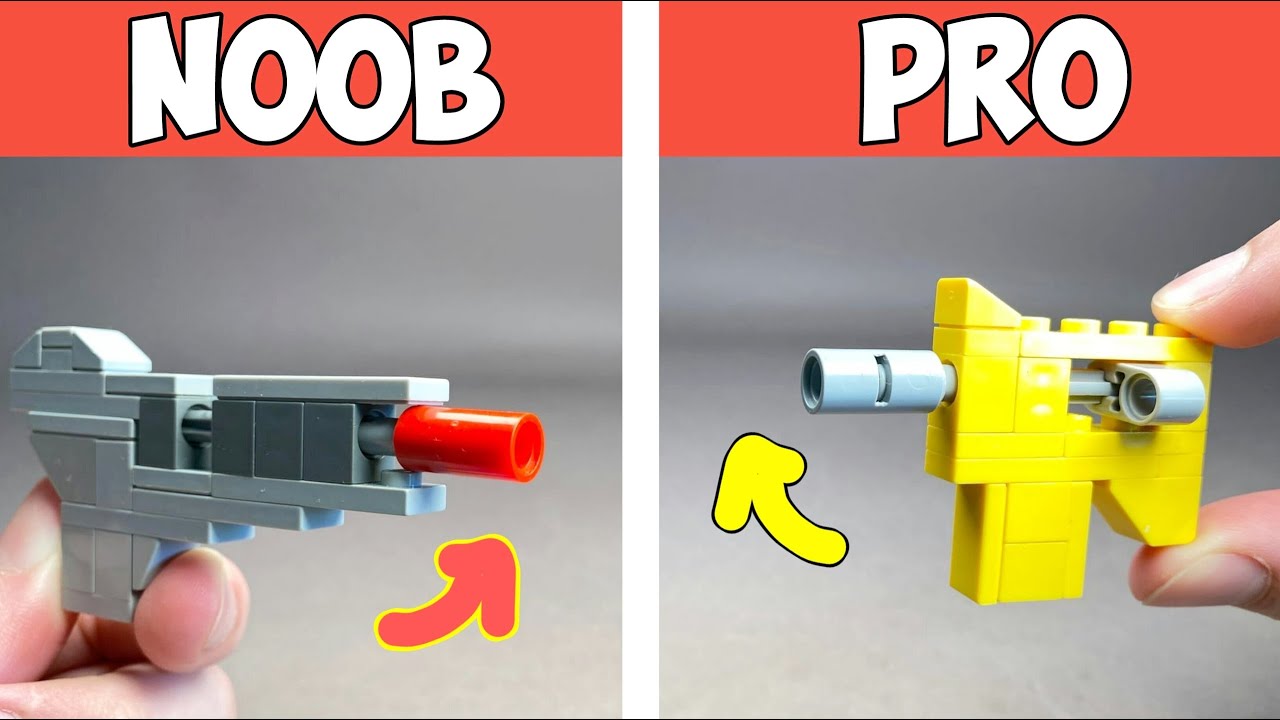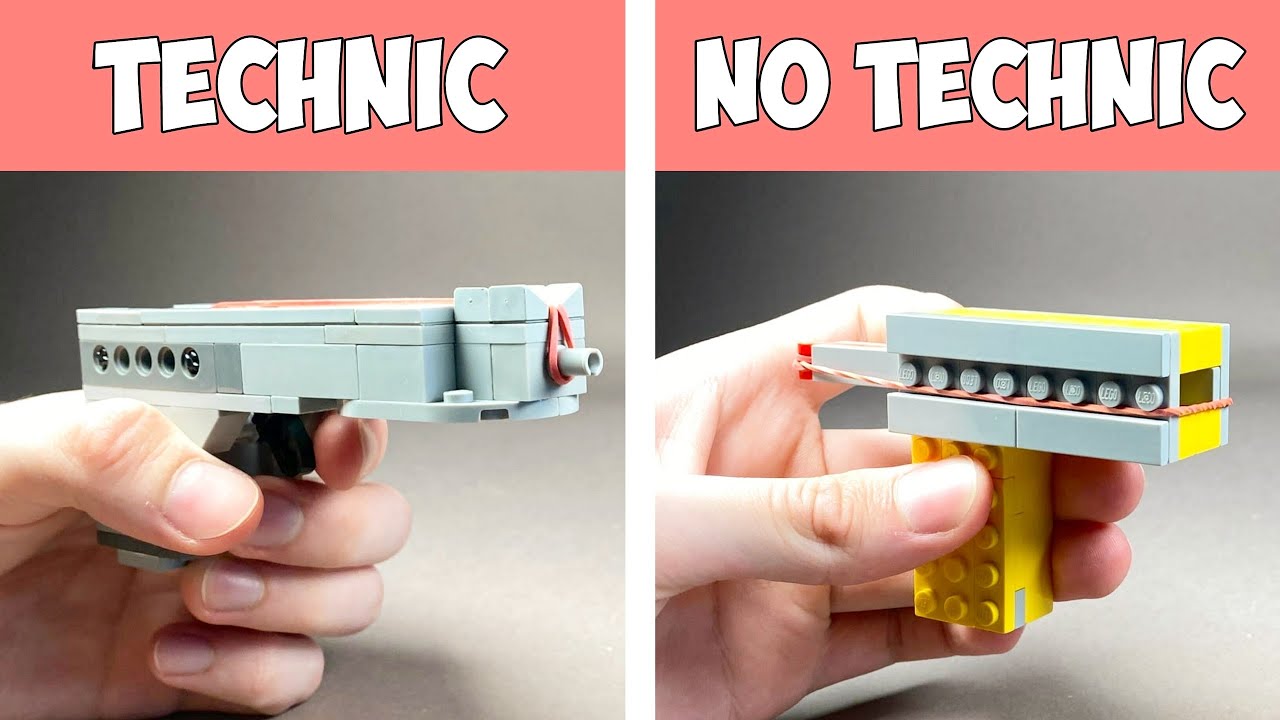Building a pistol at home may sound thrilling to some, but it's essential to approach this topic with caution. Many DIY enthusiasts are drawn to the world of home gun manufacturing for various reasons, including the sense of accomplishment and the desire for custom firearms. However, it's crucial to understand the intricacies involved. In this post, we will explore the basics of home gun manufacturing, what you need to get started, and where to find helpful video resources to guide you through the process.
Understanding the Legal Implications

Before diving into the world of home gun manufacturing, it’s imperative to understand the legal landscape. Laws regarding the manufacture of firearms can vary significantly from one country to another, and even within the same country, sometimes there are state-specific regulations to consider. Here’s a breakdown of what to keep in mind:
1. Federal Laws
- In the United States, the Bureau of Alcohol, Tobacco, Firearms and Explosives (ATF) regulates firearm manufacturing. Generally, you do not need a license to make a firearm for personal use, but selling it is a different story.
- Under Federal law, it is illegal to manufacture a firearm that is not recognizable as such or to produce unregistered firearms.
2. State and Local Regulations
- Each state has its own laws concerning the manufacture of firearms. Some require you to register your homemade gun, while others may prohibit certain types of firearms completely.
- It’s crucial to check what your local laws state about possession, transport, and intended use of homemade weapons.
3. Age Restrictions
- The legal minimum age to fabricate a firearm varies; typically, you must be at least 18 years old.
- Some states have more stringent requirements, including background checks or the need for permits.
4. Building Your Own vs. Buying Completed Firearms
- Understand that building your own firearm can sometimes be viewed differently under the law than purchasing a completely assembled gun.
- In many areas, it is considered legal to build firearms for personal use, but state laws surrounding this can differ considerably.
5. Responsibility and Safety
- As a prospective gunsmith, you will bear the responsibility for the legality and safety of your creations. This includes understanding how they function, the risks involved, and ensuring proper safety measures.
- Consequences for illegal manufacture can be severe, including hefty fines and potential imprisonment.
In conclusion, while the idea of crafting your own firearm is certainly appealing to some, it comes with a myriad of legal considerations that one must carefully navigate. Always start with thorough research of both federal and state laws, and consider seeking advice from knowledgeable sources or legal experts. This foundational understanding will help ensure that your home gun manufacturing journey is both safe and lawful.
Also Read This: The Best Approach to Download and Save Content Legally on Dailymotion
3. Essential Tools and Materials Needed

Building a pistol at home can be an exciting and rewarding project, but it’s important to have the right tools and materials to ensure safety and functionality. Before you dive into your build, let’s go over the essential tools and materials you’ll need. Remember, safety should always be your top priority!
Tools:
- Wrenches and Sockets: Dependable tools for tightening screws and bolts.
- Screwdrivers: A variety of Phillips and flathead screwdrivers will be essential.
- Drill Press: For precise drilling of holes in the frame or other components.
- Dremel or Rotary Tool: This is great for smoothing edges or trimming parts to fit.
- Calipers: To measure components accurately; precision is crucial!
- File Set: Useful for shaping and finishing parts.
- Sandpaper: Various grits will help you achieve a smooth finish.
- Vise: A sturdy vise will hold your components securely while you work.
- Safety Gear: Don’t forget safety glasses and gloves to protect yourself!
Materials:
- Receiver: This is the core component where all parts come together.
- Barrel: Choose the correct caliber based on your design.
- Slide: The moving part that cycles ammunition into the chamber.
- Trigger Assembly: The mechanism you’ll need to fire the pistol.
- Barrel Bushing: Supports the barrel in the slide if applicable.
- Springs: Various springs are required for the trigger, slide, and more.
- Grip Panels: Wood or polymer panels that create a comfortable hold.
- Finish: Decide on a finish like bluing, anodizing, or cerakote to protect your pistol.
Having the right tools and materials not only makes your project more enjoyable, but it also increases the likelihood of a safe and successful build. Make sure to double-check your checklist before getting started!
Also Read This: How to Download Dailymotion App: A Simple Guide for Easy Installation
4. Step-by-Step Guide to Building a Pistol

Ready to roll up your sleeves and get to work? Let’s break down the process of building your pistol into manageable steps. Keep in mind that this is a simplified guide, and it’s essential to follow any legal guidelines and safety protocols specific to your area.
Step 1: Gather Your Tools and Materials
This step is straightforward. Ensure you have all your tools and materials ready at your workspace. Organizing your area will help you stay focused and efficient.
Step 2: Prepare the Receiver
Start by working on the lower receiver. Depending on your chosen design, it may require drilling and milling. Use your drill press to make accurate holes for the trigger and other components.
Step 3: Install the Trigger Assembly
This involves placing your trigger and hammer into the receiver. Follow specific instructions for your parts as configurations can vary significantly. Ensure everything moves freely and is not binding.
Step 4: Add the Barrel
Securely attach the barrel to the upper receiver. If your design requires a bushing or other connection pieces, now is the time to use them. This is crucial for aligning parts correctly.
Step 5: Set Up the Slide
If building a semi-automatic pistol, the slide is next. Attach it to the frame and check the fit. You’ll want it to operate smoothly without excessive play.
Step 6: Install the Recoil Spring and Guide Rod
Every semi-automatic pistol needs these key components. They help absorb the energy generated when firing and ensure reliable cycling of rounds.
Step 7: Attach the Finish
Once your pistol is assembled, it’s time to add the finish. This could mean bluing the metal or adding a protective coating. Not only does this enhance aesthetics, but it also prolongs the life of your firearm.
Step 8: Test the Functionality
Before using your pistol, conduct thorough testing. Check if all moving parts operate as expected. If you're uncertain about any function, consult with a professional to ensure your weapon is safe.
And there you have it! With patience and attention to detail, you can build a pistol. Remember to watch relevant videos for visual guidance throughout your process, as they can provide extra insights and tips. Happy building!
Also Read This: How to Make an Oreo Cake: Delicious Recipe Guide on Dailymotion
5. Safety Precautions to Follow

Building a pistol at home is a task that requires not just technical skills but also a strong commitment to safety. It's crucial to emphasize that safety should be your top priority throughout the entire process. Here are some key safety precautions to consider:
- Wear Appropriate Gear: Always wear safety goggles and ear protection when working with tools and machinery. A dust mask can also be beneficial to avoid inhaling any particles.
- Work in a Controlled Environment: Ensure that your workspace is clean, organized, and well-ventilated. Avoid clutter that can lead to accidents.
- Understand Your Tools: Familiarize yourself with the tools you will be using. Knowing how each tool operates can prevent mishaps and ensure efficiency in your work.
- Keep a First-Aid Kit Handy: Accidents can happen, so always have a first-aid kit within reach. This should include band-aids, antiseptic wipes, and other essential items for minor injuries.
- Educate Yourself on Firearm Safety: If you’re building a pistol, you need to understand basic firearm safety rules. Always treat any firearm as if it is loaded, and never point it at anything you don’t intend to shoot.
Additionally, here are some more advanced precautions:
- Check Local Laws and Regulations: Before starting to build a pistol, make sure you are aware of the laws in your area regarding firearm construction, ownership, and modifications. This can prevent legal issues later.
- Secure Storage: Once your project is complete, store your firearm safely in a locked cabinet or safe. This ensures that unauthorized individuals, especially children, cannot access it.
- Practice Safe Handling: If you plan to fire your newly built pistol, practice safe handling at all times. This includes having a clear target area and making sure the firearm is pointed in a safe direction at all times.
By following these precautions, you not only protect yourself but also those around you. Building a pistol should be a responsible and safe endeavor, and taking these steps ensures that your project remains enjoyable and accident-free.
Also Read This: How to Make a Starburst Loom Bracelet: Easy Dailymotion Crafting Guide
6. Where to Find Video Resources on Dailymotion
If you're looking to expand your knowledge on building a pistol and prefer learning through visual aids, Dailymotion can be a fantastic resource. Here’s how to navigate Dailymotion to find quality video content:
First, head over to the Dailymotion website and use its search bar. Here are some tips for effective searching:
- Use Specific Keywords: Terms like "DIY pistol build," "homemade gun construction," or "firearm assembly tutorial" can yield more focused results.
- Filter Your Results: Dailymotion allows you to filter videos by upload date, popularity, and video duration. This can help you find the most relevant and engaging content.
- Subscribe to Relevant Channels: Identify and subscribe to channels that focus on firearms and DIY projects. This will ensure you receive updates when new videos are posted.
Additionally, consider joining discussions in the comments sections. Many content creators and viewers share helpful tips and additional resources that can enhance your understanding. Engaging with the community can provide insights that you might not find in the videos alone.
While Dailymotion offers a variety of content, ensure that you critically evaluate the quality and credibility of the videos you choose to watch. Always cross-reference information with reputable sources to verify accuracy and safety standards.
Remember, learning from experienced builders through videos can significantly aid your journey in building a pistol at home. Enjoy exploring the diverse range of tutorials available!
Also Read This: Discover Classic Animated Specials and Educational Content on Dailymotion
7. Alternative Resources for DIY Gun Projects
If you're venturing into the world of DIY gun projects, it's essential to have the right resources at your disposal. While there are plenty of online tutorials and videos, exploring alternative resources can elevate your understanding and skills. Let’s dive into some valuable options:
- Books and Manuals: Look for books written by experienced gunsmiths. Titles such as "The Art of Firearm Serialization" and "Gunsmithing: The Complete Guide to Gunsmithing" provide in-depth knowledge about firearm mechanics and assembly processes.
- Forums and Online Communities: Websites like AR15.com and The High Road have dedicated sections for DIY enthusiasts. Engaging with these communities can help you troubleshoot issues and share experiences.
- Workshops and Courses: Many local gunsmithing schools or community colleges offer workshops on building firearms. These structured environments often provide hands-on experience with guidance from professionals.
- YouTube Channels: Beyond basic DIY videos, many channels specialize in gunsmithing, restoration, and firearm modifications. Channels like "Forgotten Weapons" and "The Armory" offer not just build tutorials but also historical context and analysis.
- Local Gun Clubs: Joining a local gun club can provide access to knowledgeable members who share your interests. They might even host build days or workshops, making it a great way to learn and build community.
As you dive into these resources, remember to always prioritize safety and legality. Each project, whether it's a modifications or a full build, requires meticulous attention to detail to ensure that the finished product operates safely and effectively.
8. Conclusion and Final Thoughts
Building a pistol at home can be an exhilarating endeavor if done safely and responsibly. As we've discussed in this guide, the journey from design to production requires a solid understanding of both the legalities and technicalities involved in firearm assembly. Here are a few key takeaways as you ponder your next steps:
- Research is Key: The more informed you are about your project, the smoother the process will be. Make sure to soak up knowledge from various resources.
- Connect with Others: Whether through forums, social media, or local clubs, engaging with fellow enthusiasts expands your knowledge and can lead to helpful advice and collaboration.
- Practice Safety: Always handle firearms with caution. Use proper safety gear, work in a well-ventilated space, and follow safe handling practices.
- Stay Legal: Keep up with local laws and regulations regarding firearms. The legal landscape can change, and it’s crucial to remain compliant.
In conclusion, while the allure of building a pistol at home is strong, it's essential to approach it with respect for the craft and the responsibility that comes with it. Whether you're motivated by the challenge, a desire for customization, or the satisfaction of creating something from scratch, take your time, do your research, and enjoy the process. Happy building!
 admin
admin








